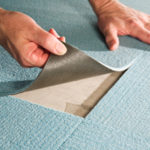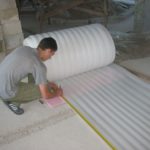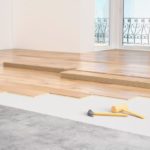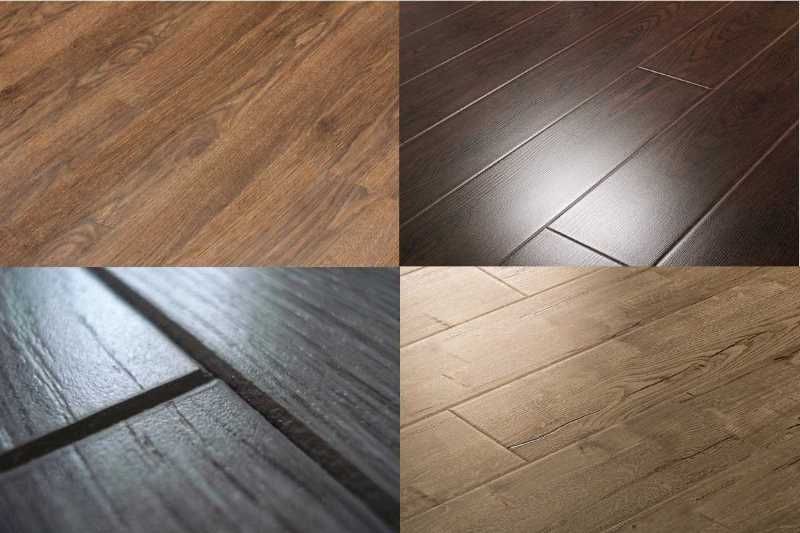Laying plywood on a concrete floor under laminate
Many homes today are built on a concrete slab rather than a full basement. While a basement is nice to have, it is an additional expense that many first-time homeowners simply cannot afford. But when they want to update their home later, this concrete slab can become a problem.
What to put under laminate on a concrete floor? Before installing laminate flooring over concrete, a plywood floor must be installed.
The content of the article
How to lay plywood under laminate on a concrete floor
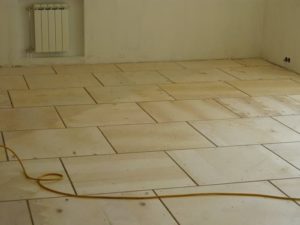 What to lay under laminate on a concrete floor? If you are installing plywood over an existing dry concrete floor, you should not have any problems. However, a new concrete floor contains a lot of moisture.
What to lay under laminate on a concrete floor? If you are installing plywood over an existing dry concrete floor, you should not have any problems. However, a new concrete floor contains a lot of moisture.
So you need to let it cure for at least 60 days before even bothering to check the moisture levels. The moisture level of the concrete should be reduced to 5.5% before installing the plywood base. Floors below grade (i.e. basements) may never reach this point.
If you live in an area that is prone to flooding, or your particular home has a history of flooding, you may want to reconsider installing hardwood flooring. Water damages wood and finishes on wood floors. In this case, it is not worth installing parquet flooring in the basement.
What should I use to lay laminate flooring on a concrete floor? Three-quarter-inch plywood is typically used.Some people recommend using pressure treated plywood, but this is not necessary. Even using pressure treated plywood in a basement that is prone to flooding will not help, since the hardwood floor installed on it will not be pressure treated. If there are uneven spots in the concrete, they will need to be corrected before installing the plywood floor.
Pieces of concrete will prevent the plywood from sitting level. Likewise, if the concrete has a seam from two separate pours that is not smooth and level, it will cause the plywood base to sit unevenly, which will ultimately cause problems with the laminate flooring installation. Small gaps, such as joints between individual slabs, are not significant as long as they are at level height.
A moisture barrier must be installed in front of the plywood. Usually this is polyethylene film. Asphalt felt, the type used for roofing, is another alternative that can also be used. The plywood itself should be laid with the long direction perpendicular to the direction of the grain on the parquet. This will help prevent cracks from forming when a seam in the floor is directly above a seam in the plywood.
There are three ways to attach plywood to a concrete floor. This:
- Screws - concrete screws provide a very secure fastening. They require the use of an impact drill to create the mortise holes and a worker to secure the screws. When installing, the screw heads should be level or lower than the surface of the plywood. Screws should be installed every 40 centimeters.
- Powder Nails - Concrete nails embedded in the floor work well if they can be installed with the heads level or slightly below level. They cannot be reset or moved deeper once they have been inserted with a powder drive tool, so run a test before using them. Like the screws, they should be spaced 16 inches apart.
- Adhesive Mastic - New adhesives provide an excellent alternative to traditional installation methods. When using adhesive mastic, vapor barrier is not used, which provides some savings. However, these adhesives are expensive, resulting in a higher overall cost. The mastic itself is wiped in place, creating some barrier from moisture. After installing the plywood base, check the edges for any ridges caused by the plywood sheets not lying flat or having different thicknesses. Any uneven areas found require filling with wood floor putty followed by sanding to provide a smooth, continuous surface for wood floor installation.
Possible errors and their elimination
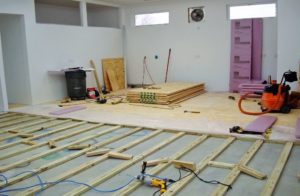 If your subfloor has too many uneven surfaces, you will need to level the floor before installation. Fill holes or low areas with cement and latex compound. Allow it to dry completely before your decking is installed.
If your subfloor has too many uneven surfaces, you will need to level the floor before installation. Fill holes or low areas with cement and latex compound. Allow it to dry completely before your decking is installed.
Your base should also be inclined. If the slope is large, it must be corrected.
Dirt and debris can damage your floors over time. Always clean and dry them before starting any type of laminate flooring installation. And the base plays a decisive role in the long-term use of the laminate.

